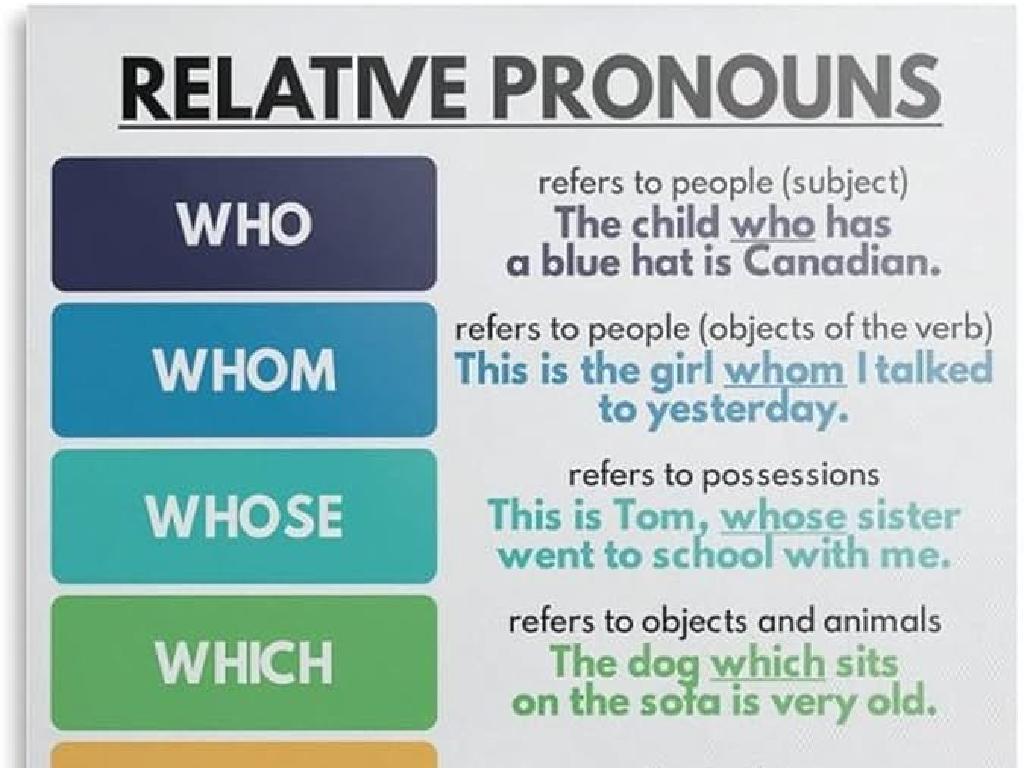Antebellum Reform Movements
Subject: Social studies
Grade: Eighth grade
Topic: The Antebellum Period
Please LOG IN to download the presentation. Access is available to registered users only.
View More Content
Welcome to Antebellum Reform Movements
– Exploring the Antebellum Period
– A time before the Civil War, marked by societal changes
– Meaning of ‘Antebellum’
– ‘Antebellum’ refers to the period before a war, in this case, the American Civil War
– Reform movements overview
– We’ll learn about efforts to improve society, including abolition and women’s rights
– Significance of reforms
|
This slide introduces students to the Antebellum Period, a pivotal time in American history just before the Civil War. It’s crucial to set the stage by explaining the term ‘Antebellum’ and its significance. The lesson will cover various reform movements that emerged during this time, such as the push for the abolition of slavery and the fight for women’s rights. These movements were instrumental in shaping the social landscape of the United States. Encourage students to think about how these historical reforms relate to current social issues. The goal is to provide a foundational understanding that will support the rest of the lesson on Antebellum reform movements.
The Spirit of Reform in the Antebellum Period
– Origins of reform movements
– Discontent with societal inequalities sparked action
– Key reform areas: social, political, humanitarian
– Focus on temperance, education, suffrage, and abolition
– Impact of reformers and societies
– Leaders like Elizabeth Cady Stanton propelled change
– Legacy of Antebellum reforms
|
This slide delves into the spirit of reform that swept through America during the Antebellum period. It addresses the reasons behind the emergence of reform movements, highlighting the widespread dissatisfaction with social and political inequalities of the time. Students will learn about the key areas of reform, including the temperance movement, educational reform, women’s suffrage, and the abolition of slavery. The role of influential individuals and societies, such as Elizabeth Cady Stanton and the American Anti-Slavery Society, will be discussed to illustrate how dedicated groups and leaders were instrumental in advocating for change. The legacy of these reforms laid the groundwork for future social justice movements and continues to influence American society today. Encourage students to think critically about how these reforms have shaped the nation’s history and to consider modern parallels.
Education Reform in the Antebellum Period
– Horace Mann’s education crusade
– Advocated for free, universal public education
– Normal schools for teacher education
– Schools specialized in training teachers
– Societal impact of education reform
– Expanded literacy, promoted equal opportunity
|
This slide delves into the significant strides made in education during the Antebellum period, focusing on Horace Mann’s influential role in advocating for public education accessible to all children. It also highlights the establishment of normal schools, which were crucial in professionalizing teaching and ensuring quality education. The societal impact of these reforms was profound, leading to increased literacy rates and promoting the idea of education as a means to achieve equal opportunity. Discuss with students how these reforms have shaped the modern education system and the importance of education in a democratic society.
The Abolitionist Movement
– The battle to end slavery
– A movement aimed at abolishing slavery across the nation.
– Key figures: Douglass & Tubman
– Frederick Douglass, an escaped slave, and Harriet Tubman, a conductor on the Underground Railroad, were pivotal in the fight against slavery.
– The Underground Railroad
– A network of secret routes and safe houses used by enslaved people to escape to free states and Canada.
– Significance in history
– It was crucial in weakening the institution of slavery and empowering enslaved people to seek freedom.
|
This slide introduces students to the Abolitionist Movement, a major reform movement during the Antebellum period aimed at ending slavery in the United States. Highlight the roles of influential figures like Frederick Douglass, a former slave who became a leading voice for abolition, and Harriet Tubman, known for her daring efforts to lead slaves to freedom via the Underground Railroad. Discuss the significance of the Underground Railroad as both a literal path to freedom and a symbol of resistance against the oppressive system of slavery. Emphasize the impact of these efforts on the nation’s history and the eventual path to the Civil War. Encourage students to reflect on the courage and determination of those involved in the movement.
Women’s Rights Movement: The Fight for Equality
– Seneca Falls Convention, 1848
– First women’s rights convention in the U.S.
– Key figures: Stanton & Anthony
– Stanton and Anthony led the fight for women’s suffrage
– Declaration of Sentiments
– Modeled after the Declaration of Independence, it outlined women’s grievances.
– Demands for equality
– Called for legal and social rights, including the right to vote.
|
This slide introduces the pivotal moment in the Women’s Rights Movement, the Seneca Falls Convention, which marked the beginning of organized advocacy for women’s equality in the U.S. Highlight the roles of Elizabeth Cady Stanton and Susan B. Anthony, who were instrumental in pushing the movement forward. Discuss the Declaration of Sentiments, a powerful document demanding equal rights for women, particularly focusing on its demand for women’s suffrage. Encourage students to reflect on the historical context of these demands and the long-term impact of the convention on women’s rights. Discuss how these early efforts laid the groundwork for future generations in the struggle for gender equality.
The Temperance Movement
– Campaign against alcohol abuse
– Advocated for moderation or elimination of alcohol consumption
– The American Temperance Society
– A key organization in the temperance movement
– Society’s methods for temperance
– Used moral persuasion and political lobbying
– Impact on American society
– Led to changes in public attitudes and laws
|
The Temperance Movement was a significant social reform movement in the Antebellum period, aiming to reduce the consumption of alcohol due to its negative effects on society. The American Temperance Society, founded in 1826, played a pivotal role by using methods such as moral persuasion and political action to advocate for their cause. They organized campaigns, held meetings, and distributed literature to spread their message. The movement’s impact was widespread, leading to a shift in public attitudes towards alcohol and the eventual passage of laws restricting its use. This slide will explore the origins, methods, and effects of the temperance movement, providing students with a comprehensive understanding of its role in American history.
Mental Health and Asylum Reform in the Antebellum Period
– Dorothea Dix’s advocacy
– Dix fought for better conditions for the mentally ill.
– Pre-reform mental health care
– Before reforms, care was inhumane and prisons-like.
– Post-reform treatment changes
– Reforms led to more humane treatment and facilities.
– Impact on mental health care
– These changes laid groundwork for modern mental health care.
|
This slide examines the significant contributions of Dorothea Dix in the realm of mental health and asylum reform during the Antebellum period. It highlights the dire state of mental health care before her intervention, where mentally ill individuals were often treated like prisoners rather than patients. Dix’s relentless advocacy led to substantial changes in the treatment and care of the mentally ill, with a shift towards more compassionate and humane approaches. The reforms she championed not only improved conditions in her time but also set the stage for the evolution of mental health care practices. Encourage students to reflect on the importance of advocacy in social reform and consider how historical figures like Dix have shaped the way we approach mental health today.
Connecting Antebellum Reform Movements
– Interconnection of reform movements
– Abolition, women’s rights, and education reforms inspired each other
– Literature and speeches as catalysts
– Writers and orators spread reform ideas, e.g., Uncle Tom’s Cabin
– Long-term societal impacts
– Reforms laid groundwork for civil rights, gender equality, public schools
|
This slide aims to illustrate the interconnected nature of various Antebellum reform movements and their collective impact on American society. Students should understand that movements such as abolition, women’s rights, and educational reform did not exist in isolation; rather, they influenced and propelled each other forward. Literature and speeches played a significant role in spreading the ideas of these movements, with works like Harriet Beecher Stowe’s ‘Uncle Tom’s Cabin’ galvanizing public opinion. The long-term effects of these reforms are still evident today in our civil rights laws, the push for gender equality, and the establishment of public schools. Encourage students to think critically about how these historical movements continue to shape modern society.
Class Activity: Reform Movement Role-Play
– Divide into groups for role-play
– Prepare a skit on movement’s goals
– Reflect on historical objectives and strategies used
– Present your skit to the class
– Discuss challenges and successes
– Consider obstacles faced and impact made by the movement
|
This activity is designed to engage students with the Antebellum reform movements through an interactive role-play. By dividing the class into small groups, each group will delve into a specific movement, such as abolition, women’s rights, or temperance. They will research and then creatively present their movement’s objectives and tactics through a skit. After presentations, lead a discussion on the historical context of each movement, the challenges they faced, and the successes they achieved. This will help students better understand the complexities of social reforms and the factors that contribute to their outcomes. Possible activities for different groups could include creating a mock debate for the abolitionist movement, a rally for women’s suffrage, or a temperance meeting. Encourage students to use primary sources for an authentic understanding of the movements’ rhetoric and strategies.





